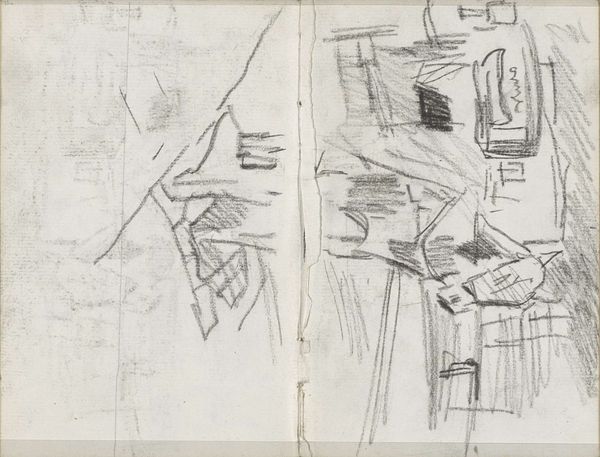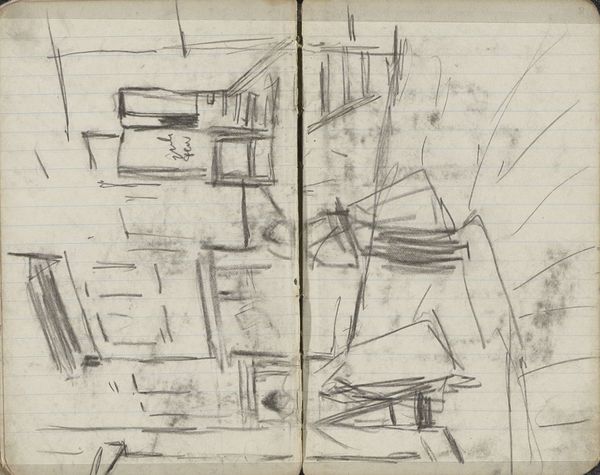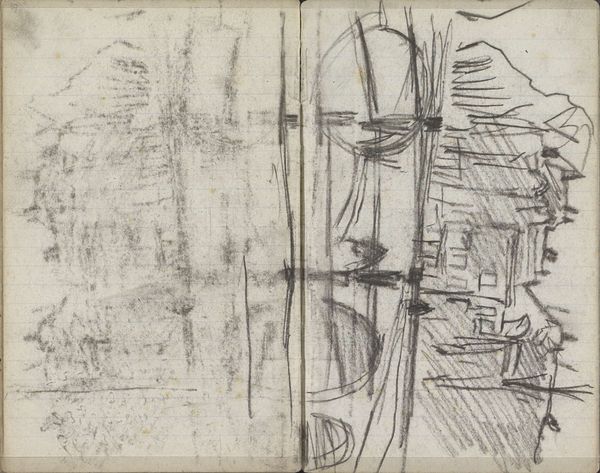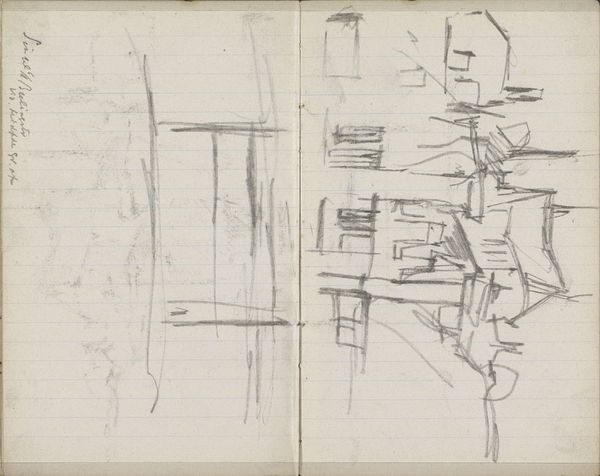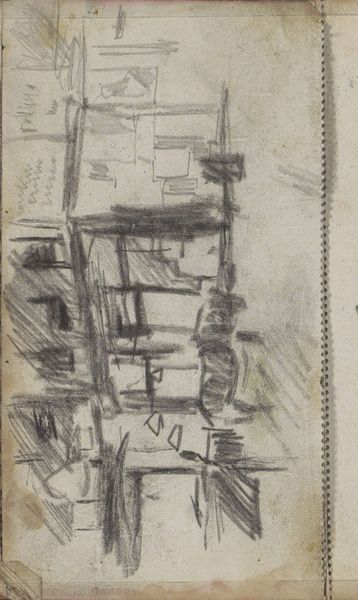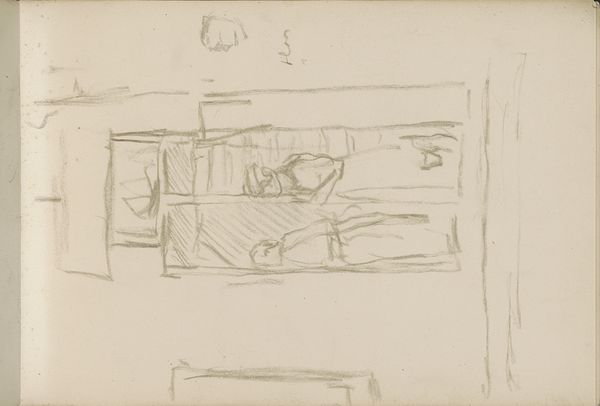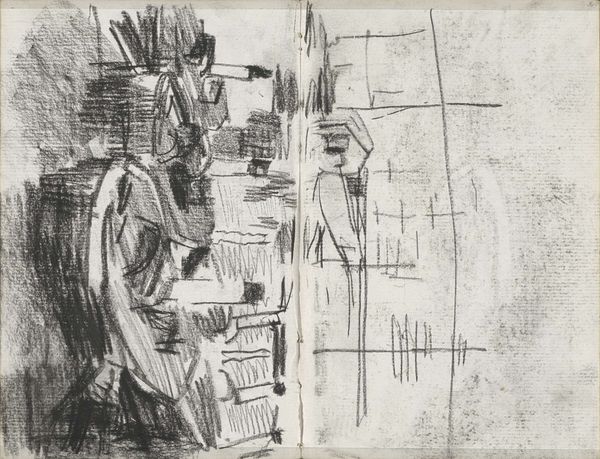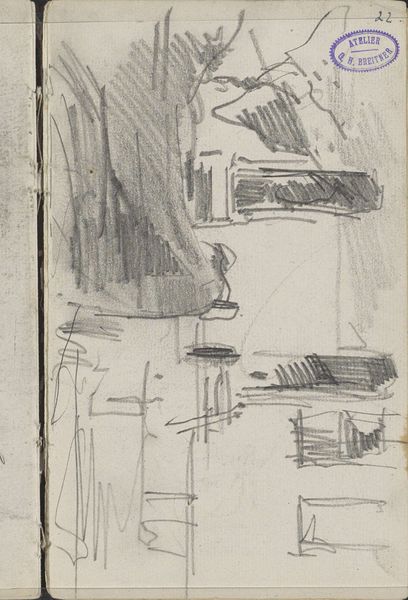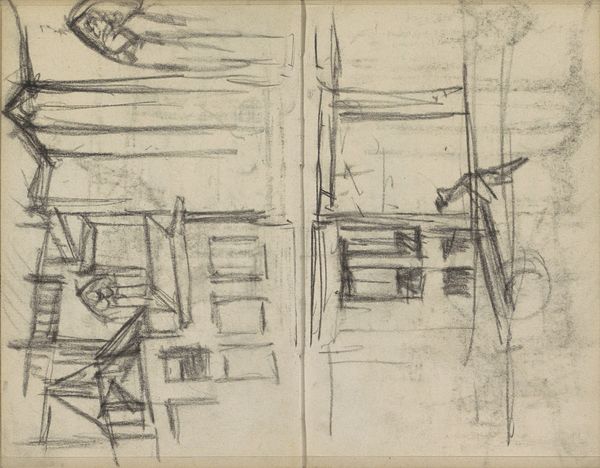
Copyright: Rijks Museum: Open Domain
Curator: This is "Winkel op de Nieuwendijk te Amsterdam" or "Shop on the Nieuwendijk in Amsterdam," a graphite drawing by George Hendrik Breitner, dating from around 1890 to 1893. It’s part of the Rijksmuseum's collection. Editor: My immediate response is a sense of incompleteness, even agitation. The lines are frantic, the composition off-kilter. It suggests a fleeting moment captured, not fully resolved. Curator: Indeed. The dynamism comes from the energetic application of the graphite. Observe the varying pressure, the way the hatching defines form, particularly the shop front and what seems to be figures obscured by shadow. There’s a raw, almost aggressive quality to the mark-making. Editor: I see that agitation translating into a broader societal commentary. Breitner was known for documenting the working class, urban life. This hasty sketch, filled with shadows and partially defined figures, reads as a critical portrayal of marginalized communities, obscured within capitalist enterprise. Curator: I appreciate your interpretation. Structurally, however, notice the effective use of the sketchbook's page break as a compositional divide. It subtly bifurcates the scene, heightening the contrast between the detailed facade on the left and the almost ethereal space on the right. Editor: But that ethereal space could also symbolize the precariousness of the lives Breitner observed. Amsterdam during this time was undergoing massive transformation with a stark contrast between opulent displays of commerce, symbolized by that shop front, and the hidden poverty of those who powered it. Curator: The sketch aesthetic also draws focus to his artistic process. This wasn’t meant to be polished, but immediate, raw, truthful. He invites us to bear witness to his observation. Editor: Ultimately, it's that immediacy, that unfinished quality that elevates it beyond a mere sketch. It's a powerful statement of the human condition within a rapidly changing urban landscape. Curator: Yes, it's a testament to how even a fleeting, unfinished piece can resonate deeply with its dynamic form and deliberate choices in composition.
Comments
No comments
Be the first to comment and join the conversation on the ultimate creative platform.

